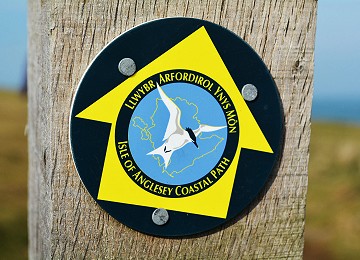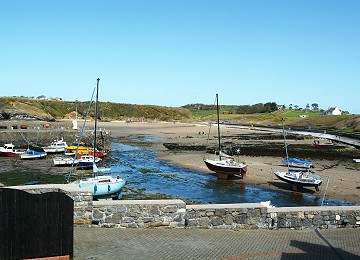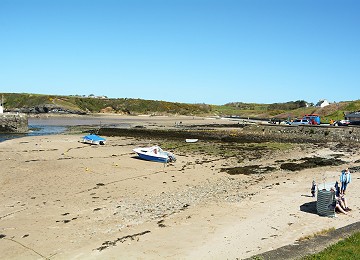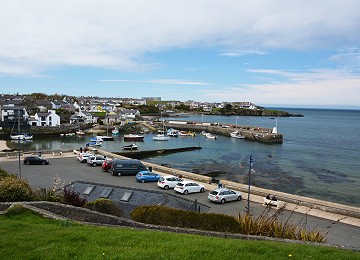PLACES TO VISIT - CEMAES BAY
This beautiful seaside village is very much a jewel in Anglesey’s crown, and is lucky enough to have two beautiful sandy beaches, Traeth Mawr (big beach) and Traeth Bach (small beach). Cemaes Bay is the most northerly village in Wales and on Anglesey.
Cemaes bay is an Area Of Outstanding Beauty (AONB) and is partly owned and cared for by the National Trust.
Due to the beach being very clean and flat it is extremely popular with Horse riding and great for launching Kayaks and Canoes.
Due to its nature and being protected from westerly and easterly winds, this also makes it a very safe beach for families and their children.

There is plenty to do and see in Cemaes Bay, like many of the ports on Anglesey it is possible to take a pleasure trip on one of the local pleasure boats and visit the local and surrounding coastline.
Chartered fishing trips are also available and run from the harbour wall.
It is common to see Porpoises & Dolphins along with many local sea birds.

Anglesey Coastal Path
The Anglesey Coastal Path is made up of 12 sections and covers approximately 125 miles of mainly coastline around Anglesey.
If you enjoy walking then there are some excellent coastal walks around the coast of Cemaes Bay.
Section 3 of the Anglesey coastal path runs from Cemaes bay to Amlwch and passes through this very beautiful part of Anglesey. The map of this section can be viewed here.

Cemaes Bay Harbour
Due to its location Cemaes is one of those naturally sheltered harbours and originally was a fishing Port.
Originally known for its salted herring between the end of the 18th and the beginning of the 20th century. Sadly that industry has died like so many others.
Cemaes also was known for the manufacture of bricks, and the remains of Porth Wen brick works can be found just along the coast.
Cemaes Bay’s Old Lifeboat
The former Cemaes Bay lifeboat, Charles Henry Ashley, a 38ft Watson designed wooden lifeboat which was built in 1907 is now is the safe custody of Cemaes Bay. The former lifeboat was stationed at the nearby ‘Porth yr Ogof’ lifeboat station by Wylfa Head until she was taken out of service in 1932.
After several years in private ownership, she was re-launched after total renovation in April 2009. She is now a major attraction to visitors at her mooring in the harbour during the summer months.
St. Patrick’s Church - Llanbadrig
The church at Cemaes Bay is situated on the headland to the east of Cemaes is a very popular attraction, it’s history is fascinating and the views are exceptional, on a clear day you can see over to the Isle of Man, the hills of the Lake District and even across to the Mountains of Mourne in Ireland.
The Welsh name Llanbadrig means Patrick church and has a direct link to St Patrick, the patron saint of Ireland and the church was founded in AD440. Local legend insists that St Patrick was shipwrecked on Ynys Badrig (Patrick’s Island) which is also known as middle mouse due to the shape of it. This tiny Island can be seen from the stile in the churchyard wall.
St Patrick was successful in crossing from Ireland to Anglesey, and then finding refuge in Ogof Badrig (Patrick’s Cave) which is below the churchyard and still has a freshwater well called Ffynon Badrig (Patrick’s Well) where local legend leads us to believe that the special water helped him recover from his ordeal and later built the church in thanks to God.

Anglesey Wildlife and Nature
The area surrounding Cemaes Bay is rich in wildlife and there is plenty to see such as the Peregrine Falcons around Wylfa headland.
Porpoises can also be seen on a regular basis.
Just up the road from Cemaes there is Cemlyn nature reserve also managed by the National Trust, this is the only home in Wales to the breeding Sandwich terns.












